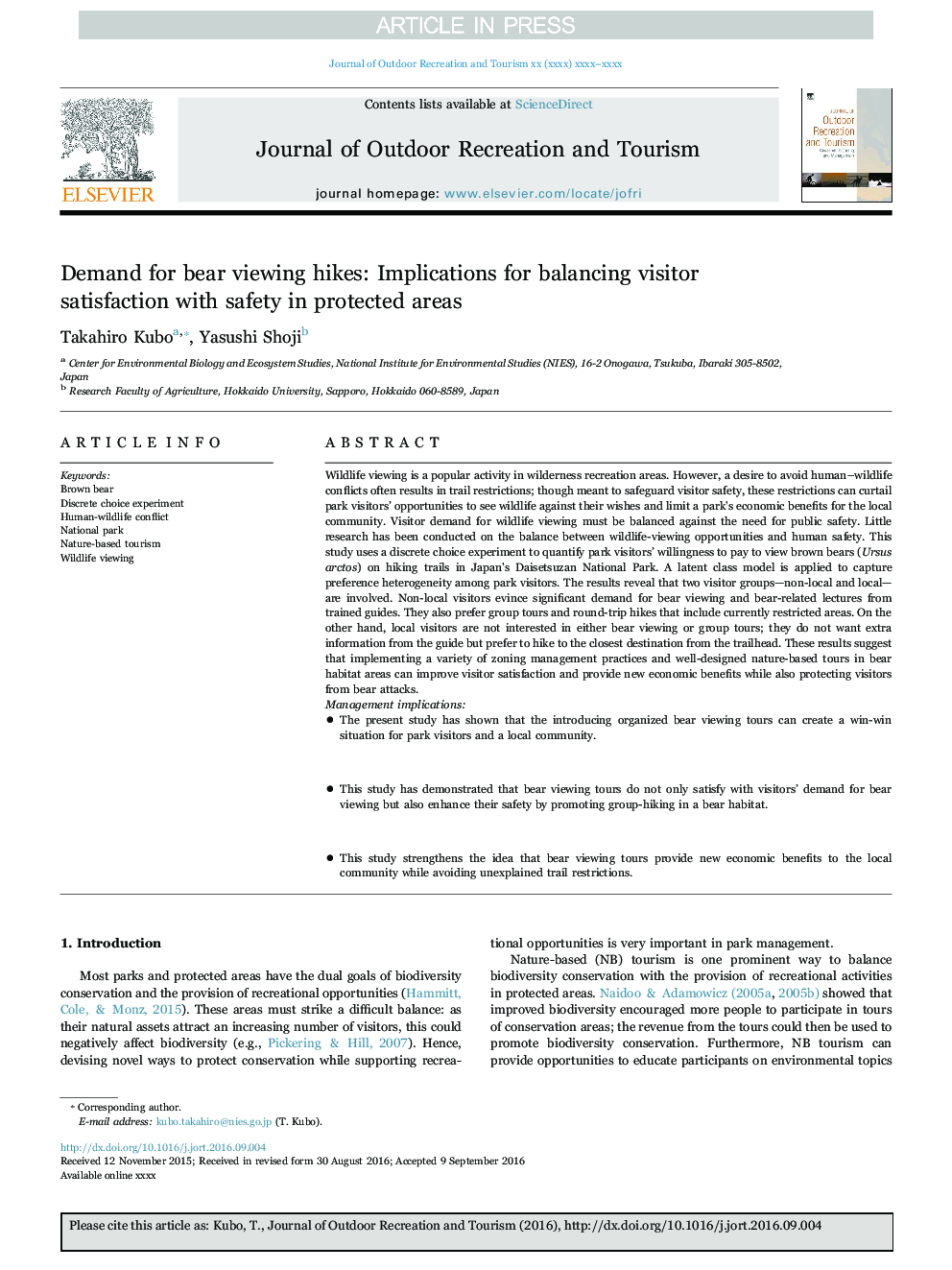| Article ID | Journal | Published Year | Pages | File Type |
|---|---|---|---|---|
| 4759911 | Journal of Outdoor Recreation and Tourism | 2016 | 6 Pages |
Abstract
Wildlife viewing is a popular activity in wilderness recreation areas. However, a desire to avoid human-wildlife conflicts often results in trail restrictions; though meant to safeguard visitor safety, these restrictions can curtail park visitors' opportunities to see wildlife against their wishes and limit a park's economic benefits for the local community. Visitor demand for wildlife viewing must be balanced against the need for public safety. Little research has been conducted on the balance between wildlife-viewing opportunities and human safety. This study uses a discrete choice experiment to quantify park visitors' willingness to pay to view brown bears (Ursus arctos) on hiking trails in Japan's Daisetsuzan National Park. A latent class model is applied to capture preference heterogeneity among park visitors. The results reveal that two visitor groups-non-local and local-are involved. Non-local visitors evince significant demand for bear viewing and bear-related lectures from trained guides. They also prefer group tours and round-trip hikes that include currently restricted areas. On the other hand, local visitors are not interested in either bear viewing or group tours; they do not want extra information from the guide but prefer to hike to the closest destination from the trailhead. These results suggest that implementing a variety of zoning management practices and well-designed nature-based tours in bear habitat areas can improve visitor satisfaction and provide new economic benefits while also protecting visitors from bear attacks.Management implications
- The present study has shown that the introducing organized bear viewing tours can create a win-win situation for park visitors and a local community.
- This study has demonstrated that bear viewing tours do not only satisfy with visitors' demand for bear viewing but also enhance their safety by promoting group-hiking in a bear habitat.
- This study strengthens the idea that bear viewing tours provide new economic benefits to the local community while avoiding unexplained trail restrictions.
- The present study has shown that the introducing organized bear viewing tours can create a win-win situation for park visitors and a local community.
- This study has demonstrated that bear viewing tours do not only satisfy with visitors' demand for bear viewing but also enhance their safety by promoting group-hiking in a bear habitat.
- This study strengthens the idea that bear viewing tours provide new economic benefits to the local community while avoiding unexplained trail restrictions.
Keywords
Related Topics
Life Sciences
Agricultural and Biological Sciences
Forestry
Authors
Takahiro Kubo, Yasushi Shoji,
